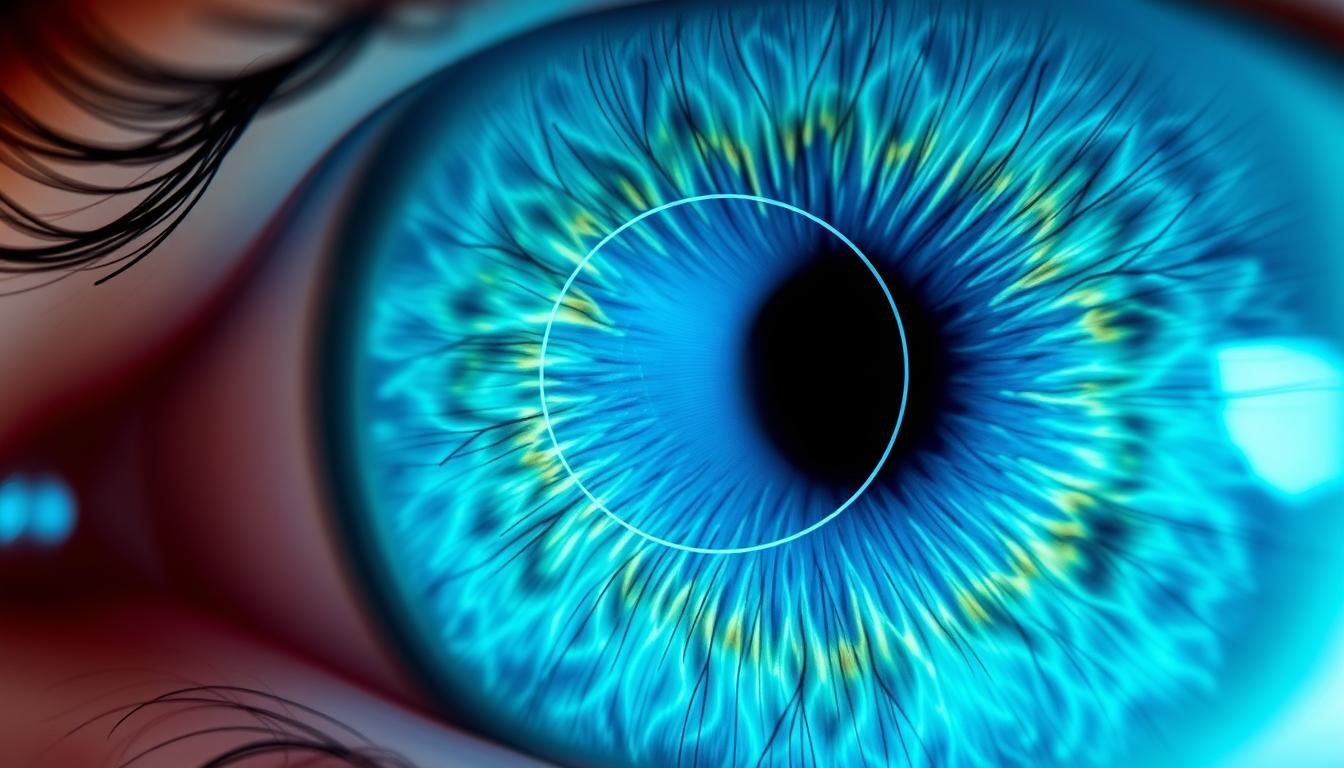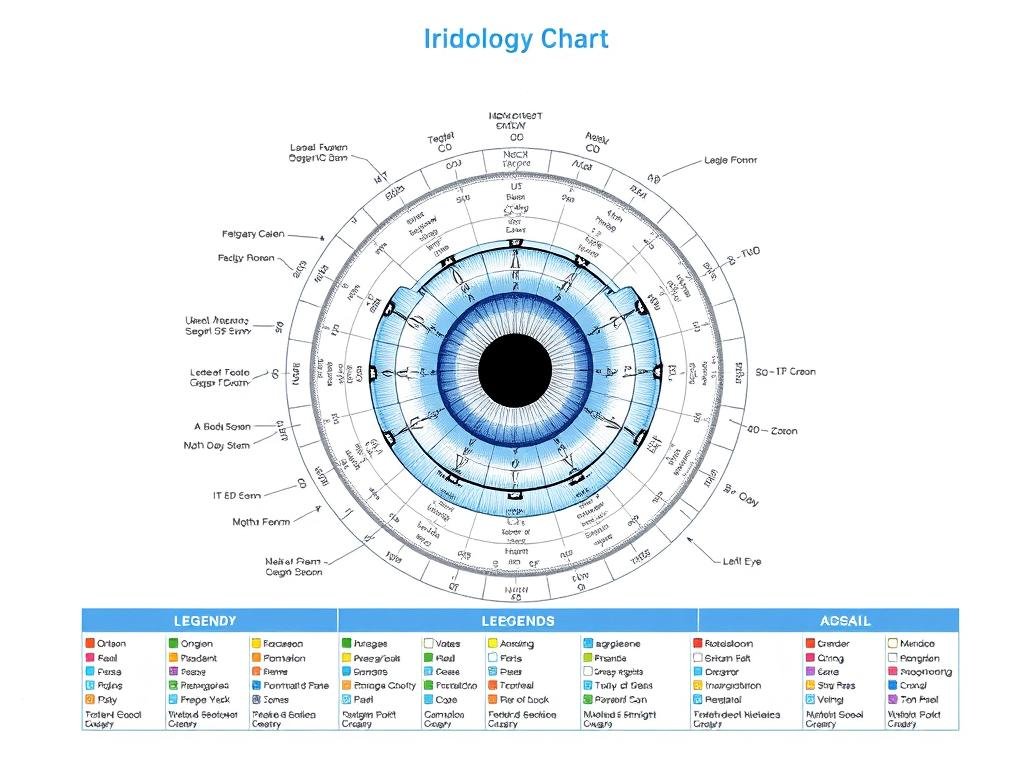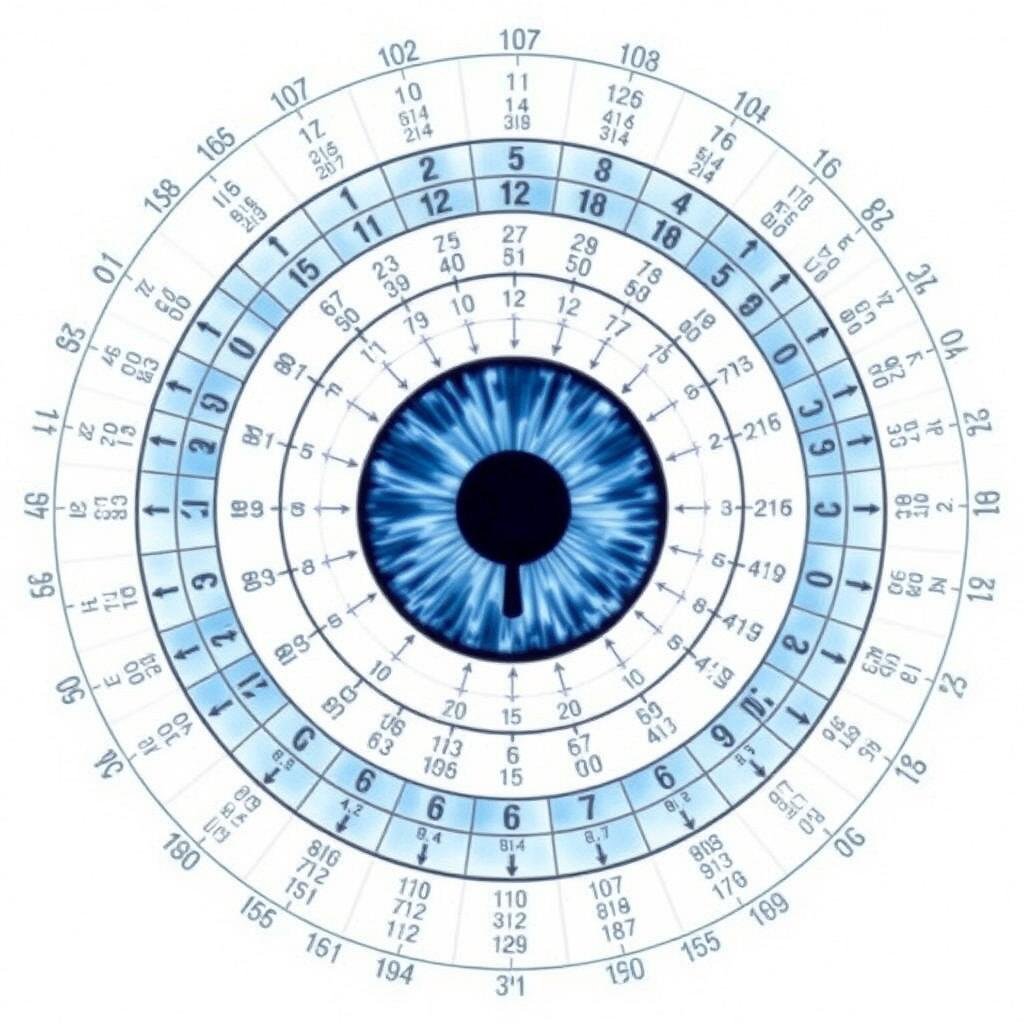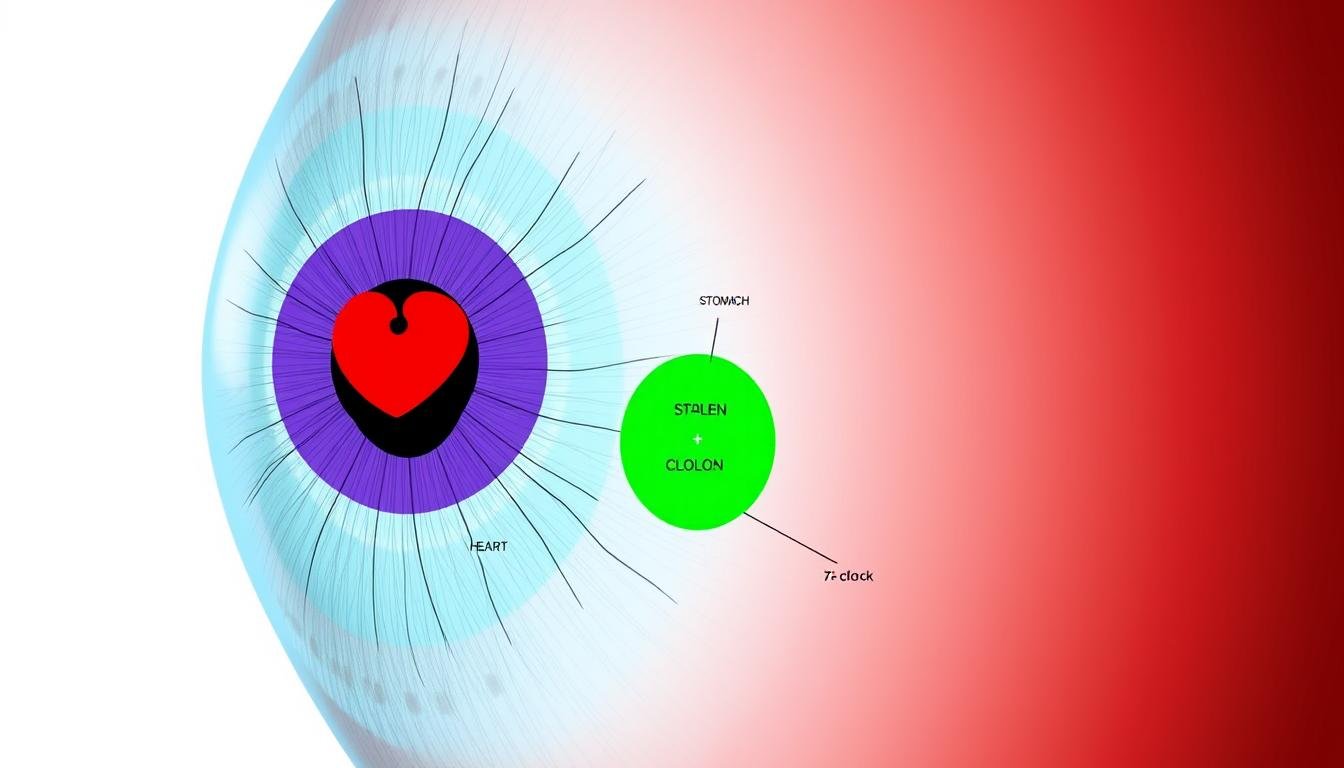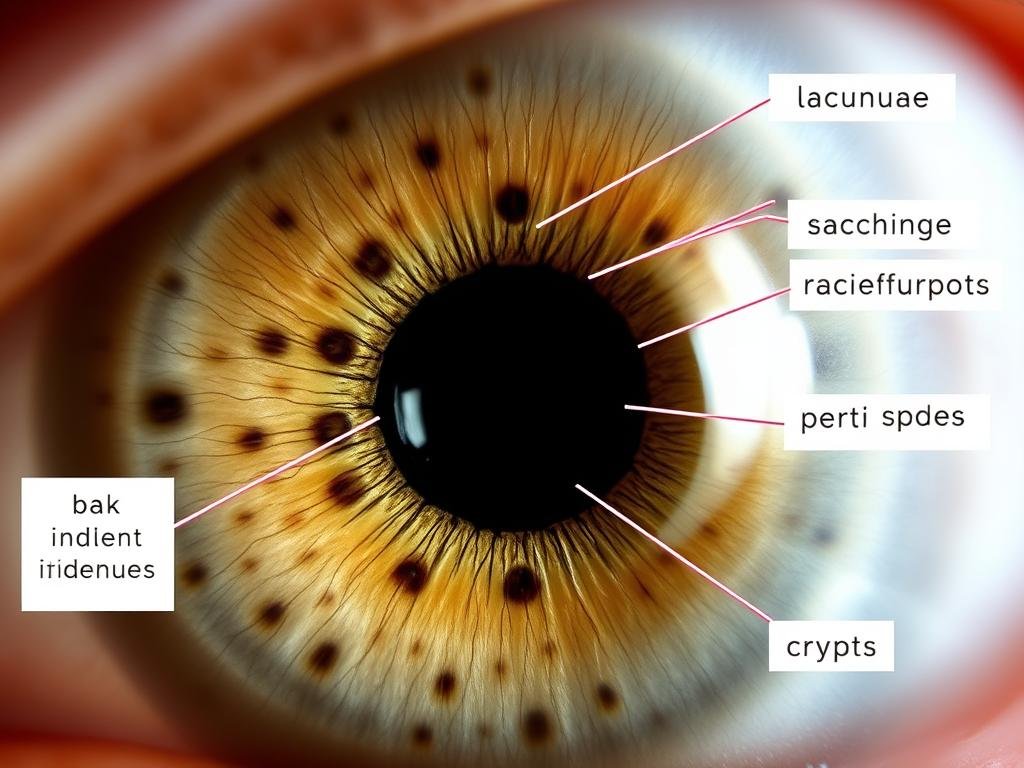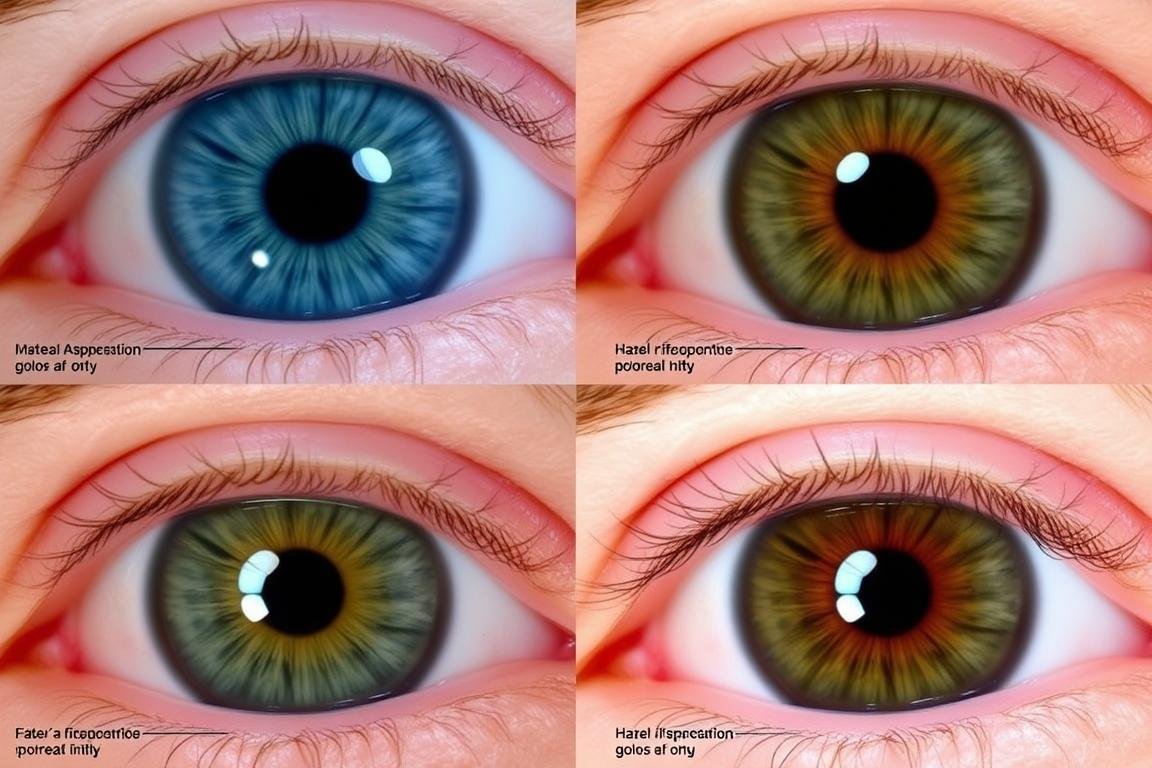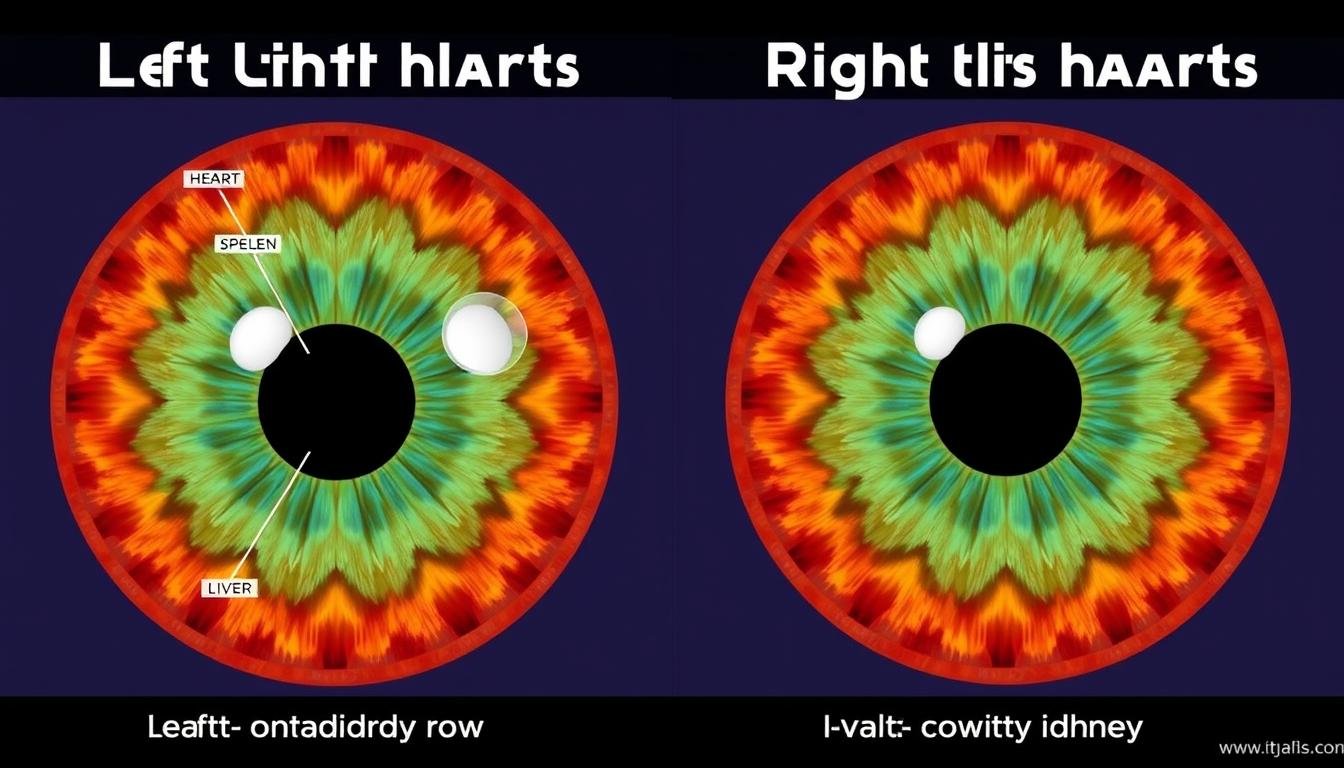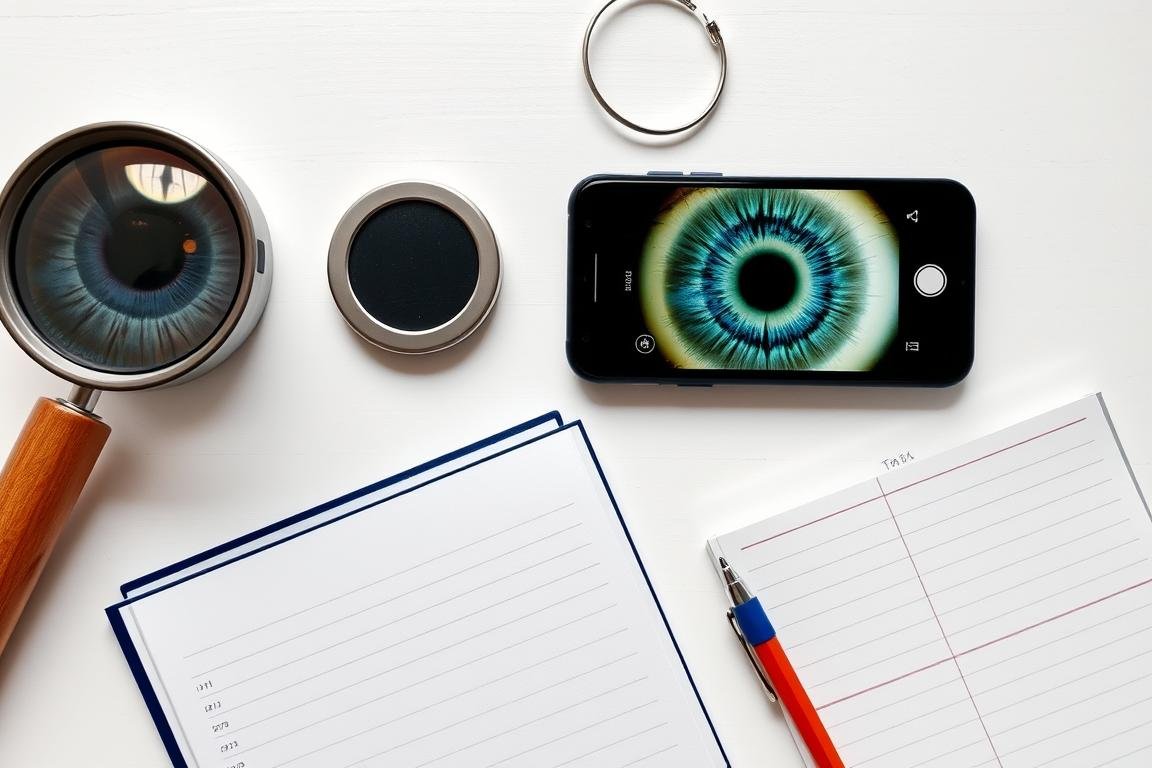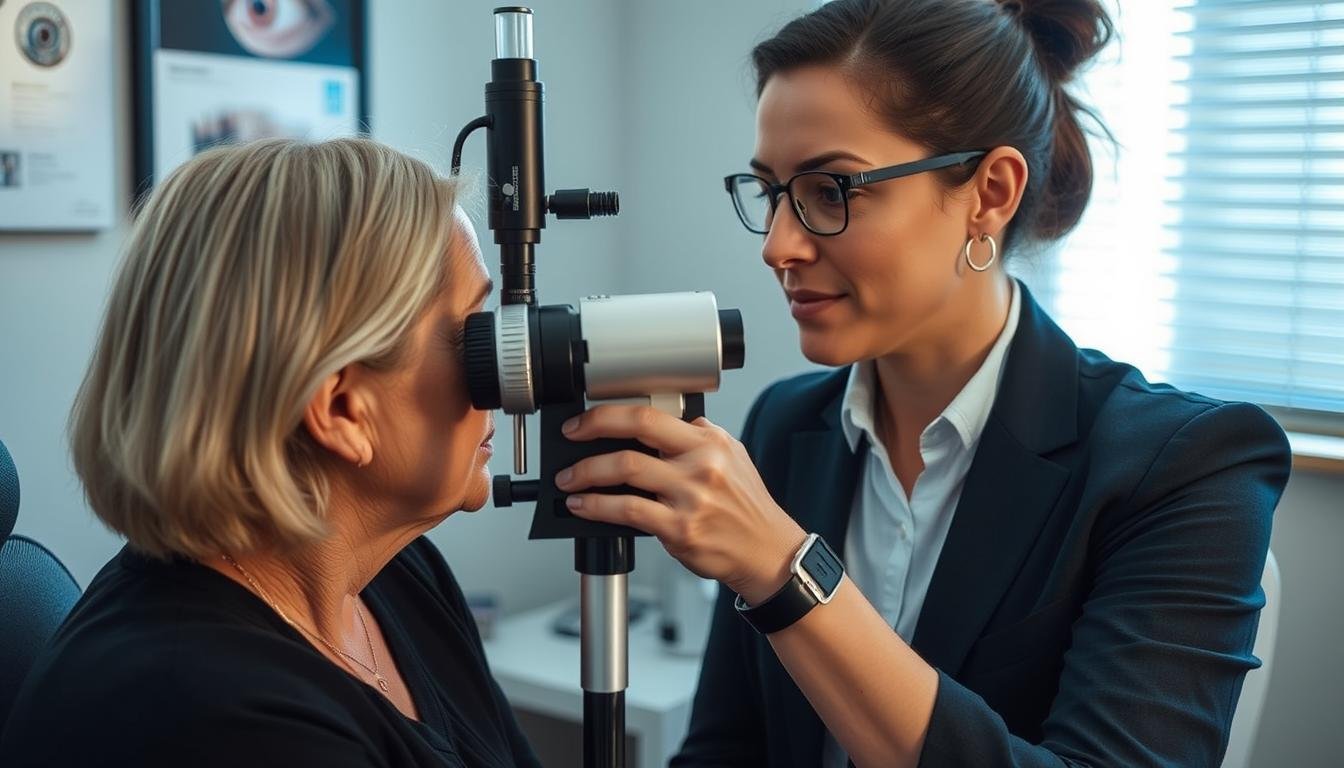Iridology Left Eye-The human iris has fascinated healers and practitioners for centuries. In iridology, the left eye is believed to reveal insights about the left side of your body and specific organ systems. This ancient practice suggests that the intricate patterns, colors, and markings in your iris can reflect your overall health status and potential areas of concern.While modern medicine approaches eye analysis differently, traditional iridology continues to intrigue those seeking alternative perspectives on their wellbeing. This guide explores the fascinating world of left eye iridology, its theoretical foundations, and practical applications for those curious about this holistic approach.What Is Iridology and Its Historical Roots

The intricate patterns of the left iris are mapped in iridology to correspond with different body systems
Iridology Left Eye-Iridology is an alternative health practice that examines patterns, colors, and other characteristics of the iris to determine information about a person’s systemic health. Practitioners believe that each area of the iris corresponds to different organs and body systems, with the left eye primarily reflecting the left side of the body.
The modern practice of iridology is often attributed to Ignaz von Peczely, a Hungarian physician who, in the 1860s, noticed changes in an owl’s iris after it suffered a broken leg. This observation led him to develop the first iridology chart mapping iris regions to specific body parts.
In the 1950s, American chiropractor Bernard Jensen further developed these concepts, creating detailed iris charts that remain influential in contemporary iridology practice. Jensen’s work established many of the principles still used to interpret the left iris today.
The Significance of the Left Eye in Iridology
În Iridologie,Iridology Right Eye Chart And iridology Chart Left eye represent different parts body. Understande how to interpret iridologyes both eyes is essential in diagnose imbalances or dysfunctions in specific organs or systems.
- ochi stâng corresponds to partea stângă body, which includes organs, tissues, and structures located on left.
- ochi drept corresponds to right side body, include organs, tissues, and structures on right side.
Here is more details breakdown organs and systems represented by each eye. These charts serve helpful guide identifye concern based on corresponde Iridology signs.



iridology Chart Left eye (Represents Left Side Body)
| Locație pe iridologie | Zona corpului/organul corespunde | Indicatori cheie de sănătate | Probleme sau dezechilibre posibile |
|---|
| Ora 12 | Left brain (psychological) | Mental health, emotional state | Stress, anxiety, depression, mental exhaustion |
| 1-2 | Left face/neck | Skin health, tension in neck muscles | Migraines, neck pain, TMJ disorders, sinus issues |
| 2-3 ora | Left throat | Respiratory and throat function | Sore throat, hoarseness, respiratory infections |
| 3-4 ora | Left upper back | Spinal health, upper back and shoulder muscles | Upper back tension, shoulder pain, poor posture |
| 4-5 ora | Left stomach | Digestive function, acid production | Stomach ulcers, indigestion, low stomach acid |
| 5-6 ora | Left pelvic region | Reproductive organs, urinary system | Menstrual issues, urinary tract infections, pelvic pain |
| 6-7 ora | Left lower back/legs | Musculoskeletal health, leg circulation | Sciatica, hip problems, lower back pain, leg cramps |
| Ora 7-8 | Rinichi stânga | Kidney and urinary function | Kidney stones, bladder issues, water retention |
| 8-9 ora | Left lungs | Respiratory health, lung capacity | Asthma, chronic bronchitis, shortness breath |
| Ora 9-10 | Left heart | Cardiovascular system, emotional well-bee | Heart disease, chest pain, circulatory issues |
| Ora 10-11 | Left digestive organs | Digestive system health | Constipation, bloate, poor digestion, liver function |
| 11-12 | Left pancreas/spleen | Blood sugar regulation, immune health | Diabetes, hypoglycemia, digestive issues, autoimmune problems |


In traditional iridology theory, the left and right eyes reveal different aspects of your health. The left eye is believed to correspond primarily to the left side of the body and specific organ systems:
- Left side organs and tissues (left lung, left kidney, etc.)
- Heart and cardiovascular system
- Spleen and lymphatic system
- Parts of the digestive tract (particularly the descending colon)
- Left side of the brain and associated functions
Some iridology traditions also associate the left eye with feminine energy, emotional processing, and the body’s relationship to maternal lineage. These connections reflect the holistic nature of iridology, which considers physical, emotional, and energetic aspects of health.
Iridology Left Eye-The theory suggests that weaknesses, strengths, and changes in these body systems may be reflected in specific areas of the left iris through variations in color, structure, and markings.
Interpreting the Left Iris Chart: Zones and Their Meanings


Standard iridology chart dividing the left iris into approximately 60 zones
Iridology charts typically divide the iris into approximately 60 zones, each corresponding to different body systems. The left iris chart has several key regions:
Major Zones of the Left Iris
Outer Ring (Skin Zone)
The outermost ring of the iris corresponds to the skin, lymphatic system, and extremities. Changes here may indicate issues with elimination, circulation, or skin conditions.
Middle Ring (Metabolic Zone)
This area relates to the digestive system, metabolic functions, and blood circulation. Markings here might suggest digestive inefficiencies or metabolic imbalances.
Inner Ring (Nervous System Zone)
The area closest to the pupil corresponds to the nervous system and brain. Patterns here may reflect stress levels, nervous system function, and brain health.
Specific Organ Zones
Within these rings, specific clock-like positions correspond to individual organs. For example, the heart zone in the left eye appears at approximately the 2-3 o’clock position.
Key Organ Correlations in the Left Iris
- Heart Zone (2-3 o’clock): Reflects cardiovascular health and function
- Spleen Zone (4 o’clock): Indicates immune system and blood-filtering capacity
- Stomach Zone (6 o’clock): Shows digestive strength and potential issues
- Descending Colon (7-9 o’clock): Reveals elimination efficiency and potential toxicity
- Left Kidney (9 o’clock): Indicates filtration capacity and adrenal function
- Left Lung (10-11 o’clock): Shows respiratory health and oxygen exchange
Iridologists examine these zones for color changes, structural marks, and other signs that may indicate imbalances or weaknesses in the corresponding body systems.
Common Patterns and Markings in the Left Eye
Iridologists look for specific patterns and markings in the left iris that may indicate various health conditions. Here are some common features and their traditional interpretations:
Structural Signs and Their Health Implications
Lacune (cripte)
These appear as dark, pit-like structures in the iris. In iridology, they may indicate inherent weaknesses or lesions in the corresponding organ. Deep, dark lacunae in the heart zone of the left eye might suggest cardiovascular concerns.
Brazde radiale
These spoke-like lines radiating from the pupil may indicate nervous tension or stress affecting specific organs. When present in the left iris’s digestive zones, they might suggest nervous digestion issues.
Pigmentation Spots
Dark spots in the iris may represent toxin accumulation or inflammation in corresponding body areas. A pigment spot in the left kidney zone might suggest kidney stress or toxicity.
Inele nervoase (inele de stres)
These appear as circular lines around the iris and may indicate nervous system stress, tension, or adrenal fatigue. Multiple nerve rings in the left eye could suggest chronic stress affecting the left-side organs.

Different iris colors provide different baseline information in iridology analysis
Color Variations and Their Meanings
The base color of your iris provides the foundation for iridology analysis, with different colors suggesting different constitutional strengths and tendencies:
- Blue Iris: Generally considered more sensitive to environmental factors and dietary changes. May show markings more clearly.
- Brown Iris: Often associated with stronger elimination systems but may mask some markings due to increased pigmentation.
- Mixed Colors (Hazel/Green): Suggest mixed constitutional inheritance and may show varying degrees of resilience in different body systems.
Color changes within specific zones of the left iris may indicate acute or chronic conditions affecting the corresponding organs or systems.
Left vs. Right Eye: Key Differences in Iridology Analysis

In iridology, the left and right eyes provide complementary information about different aspects of your health. Understanding these differences is crucial for comprehensive iris analysis:
Left Eye Correlations
- Corresponds primarily to the left side of the body
- Reflects the heart, spleen, and left kidney
- Associated with the lymphatic system
- In some traditions, represents feminine energy
- May indicate inherited traits from maternal lineage
- Shows the descending colon and elimination pathways
Right Eye Correlations
- Corresponds primarily to the right side of the body
- Reflects the liver, gallbladder, and right kidney
- Associated with metabolic processes
- In some traditions, represents masculine energy
- May indicate inherited traits from paternal lineage
- Shows the ascending colon and digestive functions
Iridologists typically examine both eyes to form a complete picture of health. Differences between the left and right iris can provide valuable insights into systemic imbalances or asymmetrical health issues.
For example, a marking in the kidney zone of the left iris but not the right might suggest an issue specifically affecting the left kidney. Similarly, stress signs appearing more prominently in one iris than the other could indicate which side of the body is experiencing greater strain.
Practical Tips for Observing Your Left Iris

Safe self-examination requires proper lighting and tools
If you’re curious about examining your own left iris, here are some practical tips to do so safely and effectively:
Safe Self-Examination Methods
Proper Lighting
Use natural daylight or a bright, diffused light source. Avoid direct sunlight or harsh artificial lighting that might cause squinting or discomfort.
Tools Needed
A magnifying mirror (5x to 10x magnification) is ideal. Some smartphone cameras with macro capabilities can also work well when used carefully.
Positioning
Stand in front of a mirror in a well-lit area. Gently hold your left eyelid open without pulling or pressing on the eye itself.
Safety Precautions
Never touch your eyeball directly. Avoid using any instruments that might contact the eye. If you wear contact lenses, remove them before examination.
What to Look For
When observing your left iris, pay attention to these features:
- Overall color and clarity of the iris
- Any dark or light spots that stand out
- Rings or circles around the iris or pupil
- Spoke-like lines radiating from the pupil
- Changes in color or pattern over time (document with photos if possible)
- Differences between your left and right iris
Remember that self-observation is primarily educational. While interesting patterns may be visible, proper interpretation requires training and experience. Consider consulting with a qualified iridologist for professional analysis.
Tracking Changes Over Time
Some iridology enthusiasts maintain an “iris journal” to track changes:
- Take clear, well-lit photos of your left iris periodically
- Note any lifestyle changes, health challenges, or improvements
- Look for correlations between iris changes and health experiences
- Document any patterns that emerge over weeks or months
This practice can be an interesting way to engage with your health journey, regardless of whether you fully subscribe to iridology principles.
Iridology: Traditional Practice vs. Scientific Perspective

While many find value in iridology as a traditional practice, it’s important to understand how it relates to current scientific understanding:
Perspectiva iridologiei tradiționale
- The iris contains detailed information about all body systems
- Specific zones correspond to specific organs
- Iris markings can indicate health issues before symptoms appear
- Changes in the iris reflect changes in health status
- Left and right eyes show different aspects of health
Scientific Medical Perspective
- Iris structure is largely determined by genetics
- Iris patterns remain relatively stable throughout life
- Limited scientific evidence supports organ-iris correlations
- Controlled studies have not validated diagnostic claims
- Eye changes can indicate some conditions (diabetes, high blood pressure)
Modern ophthalmology does recognize that certain eye changes can indicate health conditions. For example, yellowing of the eyes may suggest liver problems, and changes in blood vessels can indicate diabetes or hypertension. However, these observations differ from traditional iridology’s comprehensive mapping system.
Whether you approach iridology as a fascinating traditional practice or view it with scientific skepticism, learning about how different cultures have interpreted the human iris can deepen your appreciation for the complexity of the human body and the diverse approaches to understanding health.
Exploring Your Iris Health Journey
The study of the left iris through iridology offers a unique perspective on health that has fascinated practitioners and health enthusiasts for generations. While scientific validation remains limited, many find value in this traditional approach as a complementary tool for health awareness.
Whether you’re drawn to iridology out of curiosity, cultural interest, or as part of a holistic health journey, approaching it with an open yet discerning mind allows you to appreciate its historical significance while making informed decisions about your health care.
Remember that iridology is best viewed as one piece of a larger health puzzle, potentially offering insights that complement—rather than replace—conventional medical care and lifestyle approaches to wellbeing.
Discover Your Iris Health Profile
Curious about what your left iris might reveal? Consider a consultation with a qualified iridology practitioner who can provide personalized insights based on traditional iris analysis techniques.
Find an Iridology Practitioner
Frequently Asked Questions About Left Eye Iridology
Iridologia poate diagnostica boli specifice?
Traditional iridology doesn’t claim to diagnose specific diseases but rather identifies potential areas of weakness or stress in the body. It’s considered a complementary approach rather than a diagnostic tool in the conventional medical sense.
Why might my left and right irises look different?
Differences between left and right irises are common and expected in iridology. According to traditional theory, they represent different sides of the body and different organ systems. From a scientific perspective, minor asymmetries in iris patterns are normal genetic variations.
How often should I have my iris examined if I’m interested in iridology?
Those who follow iridology often recommend annual examinations, similar to regular health check-ups. Some practitioners suggest more frequent observations during significant health transitions or when implementing new wellness protocols.
Can contact lenses affect an iridology reading?
Yes, contact lenses should be removed before an iridology examination as they can obscure natural iris patterns and potentially lead to misinterpretations. It’s best to have your iris examined without any eye accessories.

